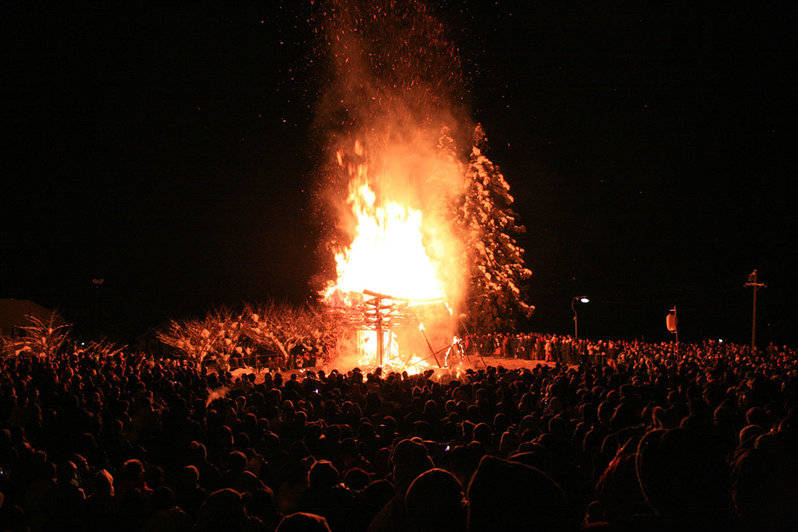Winter in Japan isn’t just about snowfall and skiing — there's also the snow festival. While there are various classic winter and snow festivals all across Japan — Sapporo Snow Festival in Hokkaido is probably the most popular — here are some of the more unusual snow festivals in Japan.
Nozawa Onsen Fire Festival
Photo from: U-ichiro Murakami via Flickr
The Nozowa Onsen Fire Festival or the Nozowa Onsen Dosojin Matsuri is a way to pray for good harvest, health and fortune in the coming year by paying tribute to the Dosojin, a folk god believed to ward off danger at borders and crossroads. Part of the ceremony involves quite an elaborate set up where the local villagers first build a wooden shrine out of sacred trees, and later reenact an hour-long scene where two groups of people try to burn down or protect the shrine accordingly. Eventually, the shrine is lit on fire as an offering marking the end of the ceremony.
Nozawa is located in northern Nagano prefecture — make sure to enjoy the free traditional public onsen and excellent ski facilities when visiting this village. The Nozowa Onsen Fire Festival usually takes place annually on 15th January.




